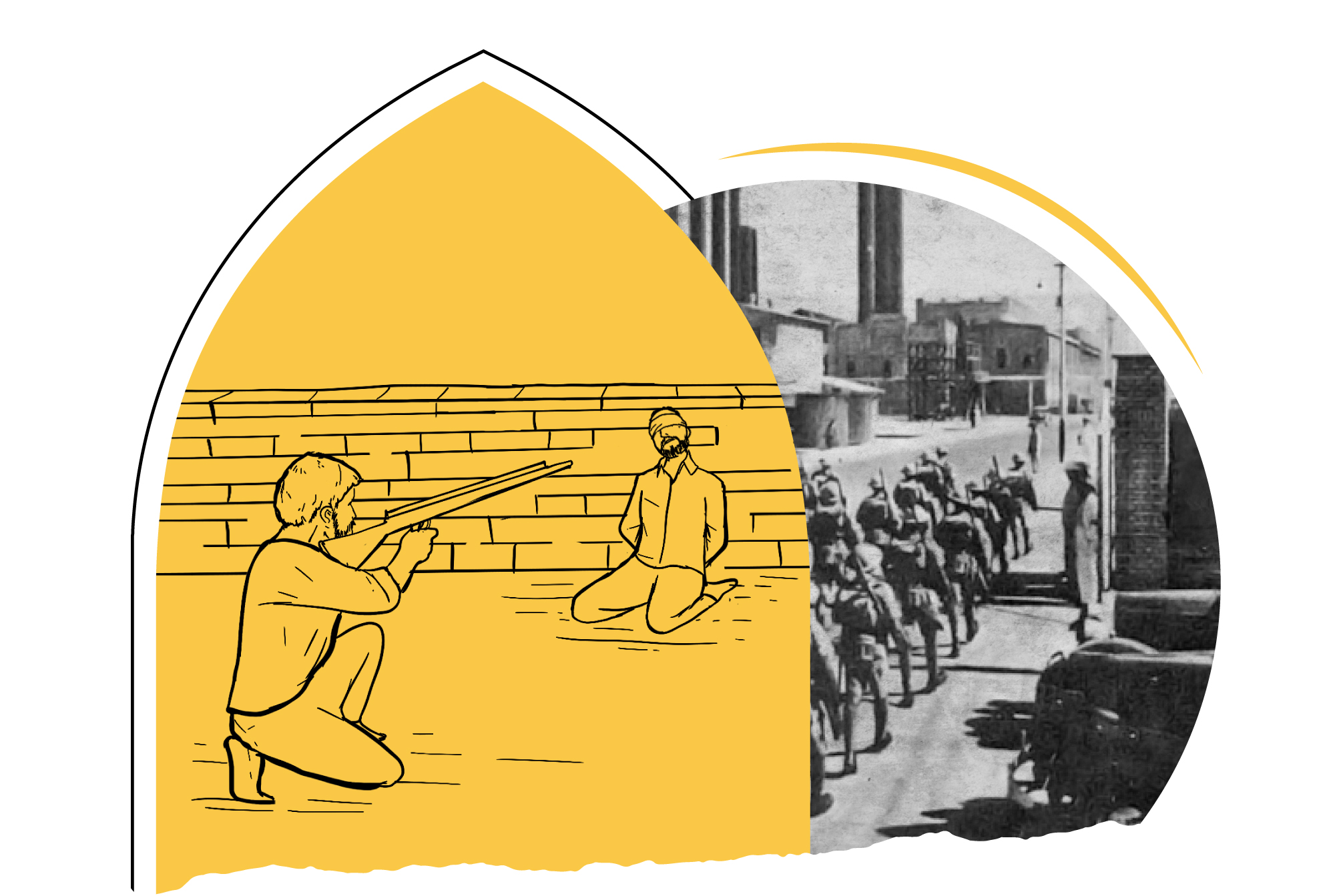
Bani Tarf Revolution (1936)
Sixteen Revolutionaries were executed by Persians and Ahvazis were Terrorized
The spirit of Ahvaz Arab revolution has not stopped since 1925. Putting off the repeated revolutions did not dissuade Ahvaz Arab clans, who had their firm position against the hateful Iranian occupation. Among those clans is Bani Tarf clan, which traces its tribal origins back to Tai tribe. It is one of the clans that was famous for its magnanimity and courage. It seems that it is one of the clans that were displaced from the areas of Khabour and settled in Hawizeh, Tina and Khafajah, where Malikiyah became a base for Bani Tarf, as mentioned by the Iraqi historian Abbas Al-Azzawi in his book, Clans of Iraq, as well as in Karkhah in the Iranian region, on the western border for Al-Bu Muhammad clan. They were presided by Aal Saeed and Aal Sayah.
Bani Tarf clans declared their violent rejection of the Persian occupation and revolted against the Persians for the first time in 1936. Shah Reza Pahlavi saw this widespread uprising as a rebellion against his occupying power and launched a brutal and terrorist military attack, with the aim of accomplishing a political step by which he believed he could achieve a comprehensive bloody liquidation of the Arab spirit in Ahvaz. Thus, he marched his large army to Khafajiah and its outskirts and eliminated that popular armed movement that rejected the Persian occupation, using extreme means of violence and extreme cruelty, as detailed in the testimonies of the living and the pages of books that elaborated on describing those tragic events. He wanted to terrorize all Ahvazi patriots, captured several national symbols and executed them, sixteen of whom were national symbols and chiefs of clans, who were ordered to be buried alive in front of many observers. That was a brutal terrorist lesson to spread panic and fear among Ahvazis for whoever would oppose the Persian occupation and its regime.
Excessive brutality on the part of the usurping Iranian occupier did not prevent the men of Bani Tarf clan from declaring the revolution again in 1945, when the clan was able to eliminate a number of soldiers from the Persian army with their old light weapons, setting an example of courage in the face of the Persian element. The Persians met them with their military force equipped with heavy and modern weapons, where they used armor, cannons and air force against Bani Tarf. However, the clan’s revolutionaries were able to shoot down a Persian plane that was bombing them with incendiary bombs. Yet, Bani Tarf men retreated afterwards under a barrage of bullets, Persian armored vehicles and their attacking aircraft.
Following the failure of Bani Tarf revolution, the Persians deported about 1400 of them, including young men, old men, children and women, on foot to northern Iran in the harsh winter of that year, in retaliation against the Arabs for their revolution. The tragedy is that only forty of those people arrived in Tehran as the rest died on the way out of hunger, fatigue and cold. Many narrations were told about the barbarity of the Persians in dealing with the prisoners, which was far from humanity and mercy. It is said that after the remaining prisoners arrived in Tehran, the official of Tehran garrison asked the Persian soldiers about their conditions on the way. One of the Persian soldiers answered him that his mule had died on the way, so the Persian officer turned to the captives and saw an Arab woman with a gold earring in her ear. So, he extended his hand to that earring and pulled it off with force, which led to blood flowing from her ear, and then pushed it to that soldier and asked him to buy him a new mule. This was a scene that summarizes the aggressive tendency, contempt for everything that is Arab and disregard for human rights.
Despite the failure of the first Bani Tarf revolution in 1936, they repeated the experience after nine years in search of freedom.

That incident was a tragedy in the perfect sense of the word and an image of the Persian oppression and cruelty Bani Tarf clan, the Arab clan and other Al-Ahvaz clans, have suffered. It is evidence of what Iran has been practicing since ancient times in terms of hatred and cruelty in dealing with the Arabs. It is still practiced, as it is its permanent approach.


- Samia Al-Jabri, Ahvaz Arabistan during the Pahlavi Monarchy (Beirut: Jadawl for Publishing, Translation and Distribution, 2019).
- Abbas Al-Azzawi, Clans of Iraq (Baghdad: Trading and Printing Company Ltd., 1956).
- Abd al-Jalil al-Taher, Confidential report of the British Intelligence Service on clans and politics between the social and political conditions of Iraqi clans (Baghdad: Al-Zahra Press, 1958).
- Ali Al-Helou, Ahvaz Revolutions and Organizations 1914-1966 (Najaf: Al-Ghari Modern Press, 1970).

